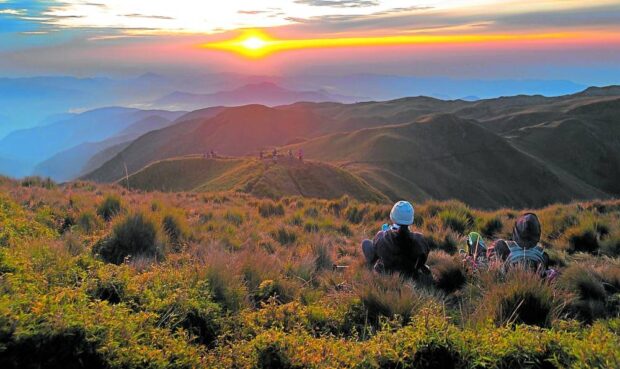Cordillera pushes for ‘green energy’

GREEN ENERGY SOURCE Mt. Pulag, Luzon’s highest peak that spans the provinces of Benguet, Ifugao and Nueva Vizcaya, is not just a favorite trekking site for nature lovers, as shown in this 2015 photo, but is also a resource-rich mountain that has natural watershed resources that can be tapped for the high-impact renewable energy projects in the Cordillera. —RICHARD BALONGLONG
BAGUIO CITY — The latest Cordillera development plan will be driven by a “green energy” agenda to maximize the region’s potential as a “renewable energy powerhouse” while raising the capital needed to preserve Luzon’s watershed areas, Socioeconomic Planning Secretary Arsenio Balisacan said on Thursday.
In a recorded message, Balisacan discussed the new direction being taken by Baguio City and the provinces of Kalinga, Ifugao, Benguet, Abra, Apayao, and Mountain Province during the launching ceremony here of the 2023-2028 Cordillera Administrative Region Development Plan (CARDP), which was attended by all of the region’s governors.
Like the rest of the country, CARDP was designed to steer the region’s recovery in the wake of the “lasting” economic impact of the COVID-19 pandemic, the lingering effects of the Russian war in Ukraine, and extreme weather, he said.
Balisacan said the Cordillera appeared to have coped better than other regions, having ranked as the second-fastest growing economy in 2022. The Cordillera’s gross regional domestic product (GRDP) contracted by 10.2 percent in 2020 when the pandemic struck, but bounced back last year, with an 8.7-percent growth in GRDP.
He said improving food security remains a key priority for the CARDP in light of fluctuating world food prices, the country’s high power costs, and the El Niño phenomenon expected to affect the country by the end of the year.
Article continues after this advertisementBut Balisacan said actively pursuing renewable energy projects is “timely,” given that the headwaters of 13 Luzon river systems are in the Cordillera.
Article continues after this advertisementAccording to the Department of Environment and Natural Resources, 85 percent of the highland region is forest land.
“The [CARDP] strategies include the protection of the region’s environment and natural resources as well as the exploration of all of its renewable energy potentials,” he said.
The ceremony made no references to some of the country’s oldest hydroelectric dams, which buried indigenous Cordillera communities after they were built in the 1960s. These hydroelectric dams still contribute to the Luzon Power Grid.
A Malacañang-backed project in the 1970s to build four more dams along the Chico River, a 233-kilometer river system traversing the Cordillera and Cagayan Valley regions, stirred up broad-based opposition from tribal elders at the time, forcing the developers to back out.
—VINCENT CABREZA
READ: As renewable energy takes over, ways sought to manage its byproduct—wastes